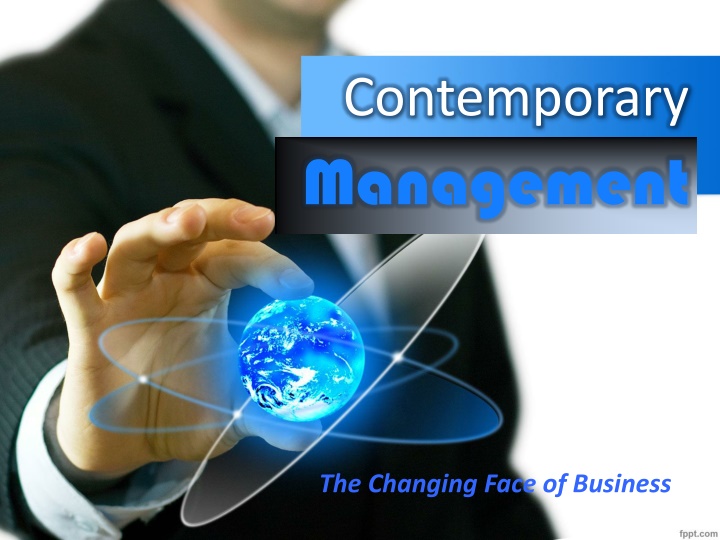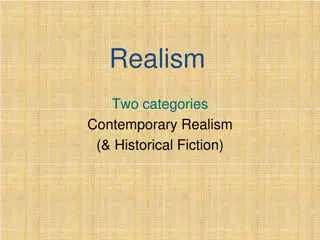
Contemporary Management: The Changing Face of Business Today
Explore the evolving landscape of contemporary management in the business world with Dr. Amanda N. Gibson. Learn about the definition of business, the private enterprise system, essential skills for managers in the 21st century, and the six eras in U.S. business history. Discover the characteristics of today's business workforce and the challenges posed by an aging population. Stay informed about the dynamic nature of business and workforce changes to adapt effectively in the modern business environment.
Download Presentation

Please find below an Image/Link to download the presentation.
The content on the website is provided AS IS for your information and personal use only. It may not be sold, licensed, or shared on other websites without obtaining consent from the author. If you encounter any issues during the download, it is possible that the publisher has removed the file from their server.
You are allowed to download the files provided on this website for personal or commercial use, subject to the condition that they are used lawfully. All files are the property of their respective owners.
The content on the website is provided AS IS for your information and personal use only. It may not be sold, licensed, or shared on other websites without obtaining consent from the author.
E N D
Presentation Transcript
Contemporary Management The Changing Face of Business
Let me introduce myself: I'm Dr. Amanda N Gibson, consultant in Management and Leadership, professor, author and speaker. My books: What We Know and What We Do Nonprofit Realities Everybody Must Face; both available at Amazon.com Succession Planning In Nonprofits: The Distance Between
Few of today topics: Explain how today s business * Define what is business. workforce and the nature of work itself * is changing. Describe the private enterprise system. * Identify the skills and attributes needed * for the 21st century manager. Identify the six eras in the history of business. *
What is Business? Profit-seeking activities and enterprises provide goods and services necessary to an economic system. Profit-seeking is the reward for business people who take the risk involved to offer goods and services to customers. See Fortune 500 for a list of major U.S. companies.
The Private Enterprise System Capitalism Adam Smith is the father of capitalism. Invisible Hand Economic system determines business ownership, profits, and resources Rewards firms for their ability to serve the needs of consumers Minimized government intervention Competition is the battle among businesses for consumer acceptance.
Six Eras in the History of U.S. Business
Todays Business Workforce Dedicated workers who can foster strong ties with customers Capable of high-quality production Able to compete in global markets Technically savvy
Changes in the Workforce: Aging Population By 2030, the number of U.S. workers 65 or older will reach 72 million. Many baby boomers are hitting the peak of their careers, while Generations X and Y are launching their careers. Technology has intensified the hiring challenge by requiring workers to have ever more advanced skills. U.S. Census Bureau
Changes in the Workforce: Shrinking Labor Pool/Diversity Economists predict the U.S. labor pool could soon fall short by as many as 10 million people. The two fastest-growing ethnic populations in the United States are Hispanics and people of Asian origin. Employee teams with individuals of different genders, ethnic backgrounds, cultures, religions, ages, and physical and mental abilities are more effective.
Changes in the Workforce: Flexibility and Innovation through Collaboration Younger workers are looking to something other than work-comes-first Telecommuting and job-sharing Part-time and temporary workers are growing Collaboration is replacing working alone Value risk-taking and innovation
The 21st-Century Manager Critical-thinking Creative Able to lead change Visionary
Critical Thinking and Creativity Critical thinking is the ability to analyze and assess information to pinpoint problems or opportunities. Creativity is the capacity to develop novel solutions to perceived organizational problems.
Ability to Lead Change Guide employees and organizations through changes Managers must be comfortable with tough decisions. Factors that require organizational change can come from external and internal sources.
Thank you! ANG Management Coaching and Consulting offers a variety of consulting services for small business owners, designed to address everything from major strategic issues to more basic problems affecting everyday business practices. Additional Resources: Seminars Books Call us! ANG MCC identifies, researches alternatives and solves business problems with the highest value-adding solutions. Our team of professionals looks forward to meeting you at one of our seminars, at our conference booths, through various communications channels, or just to connect through social media (see details at www.ang-mcc.com).











